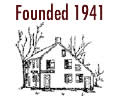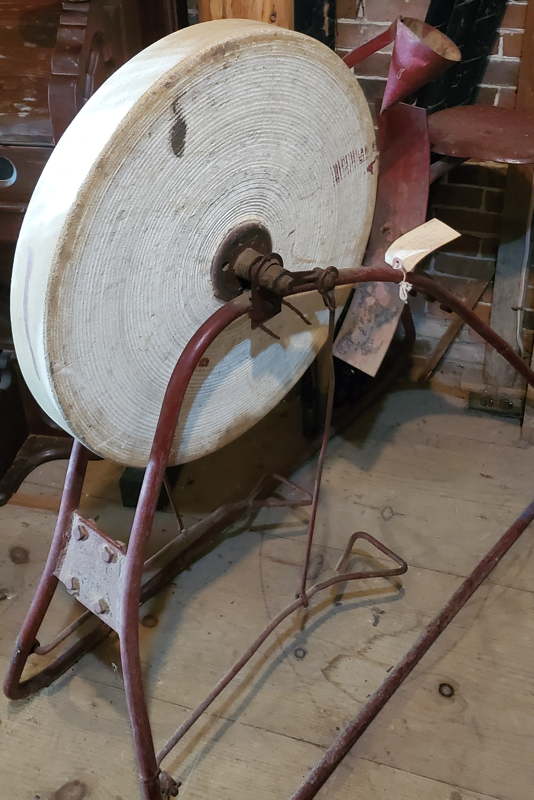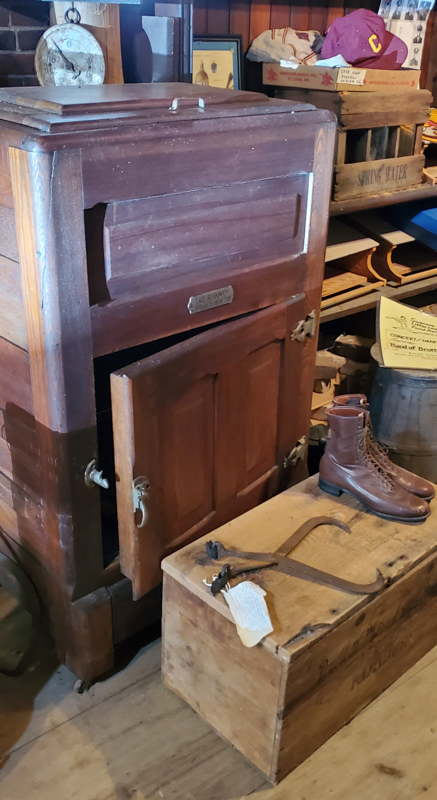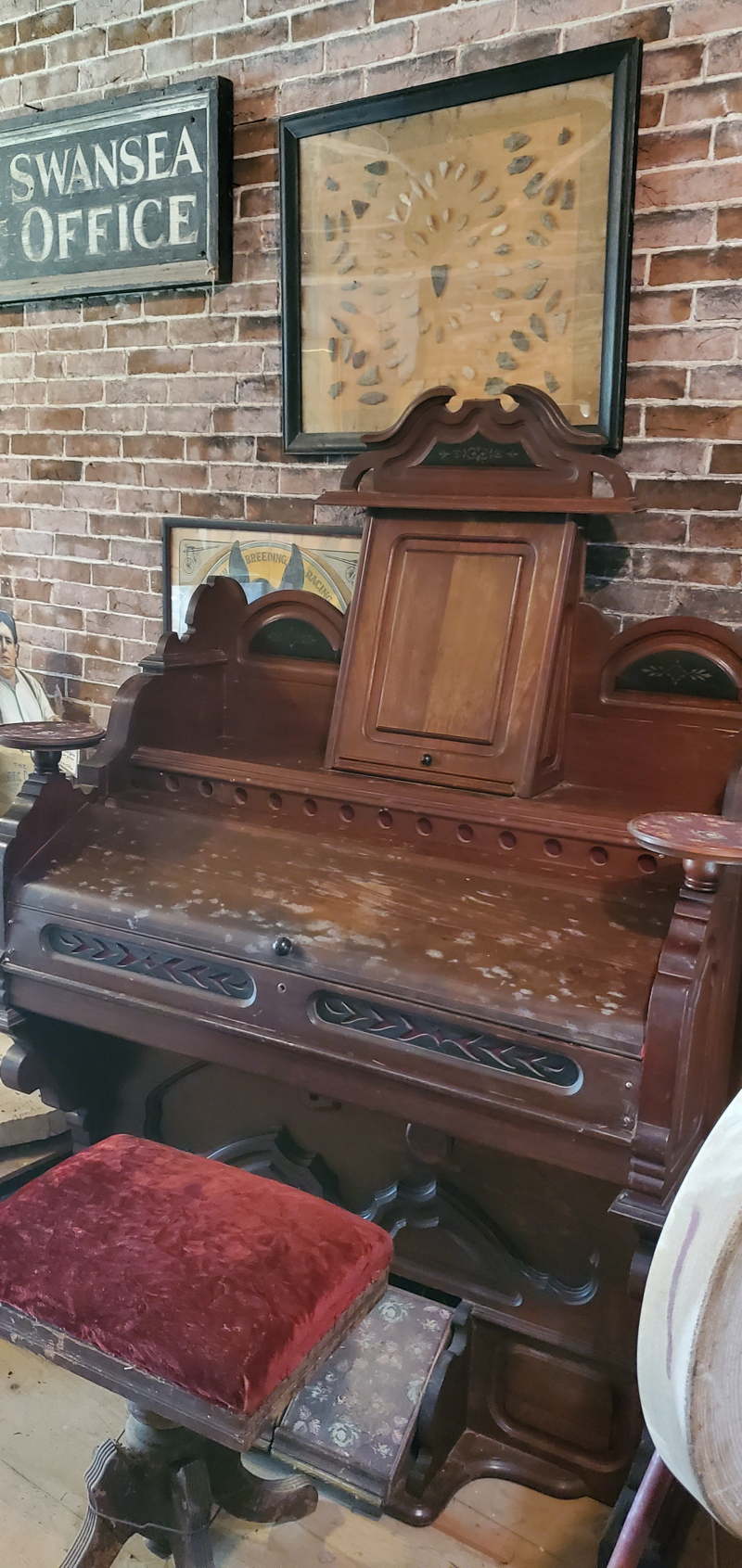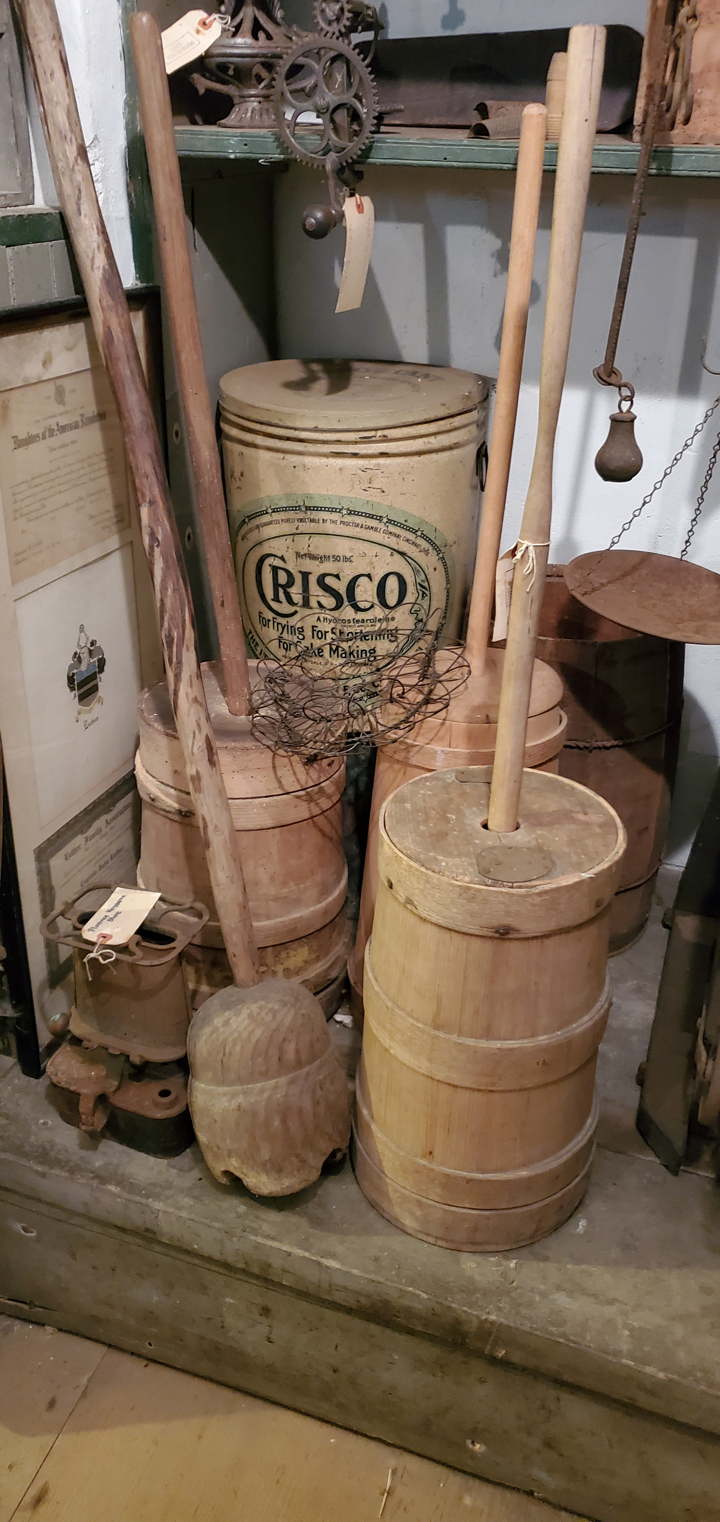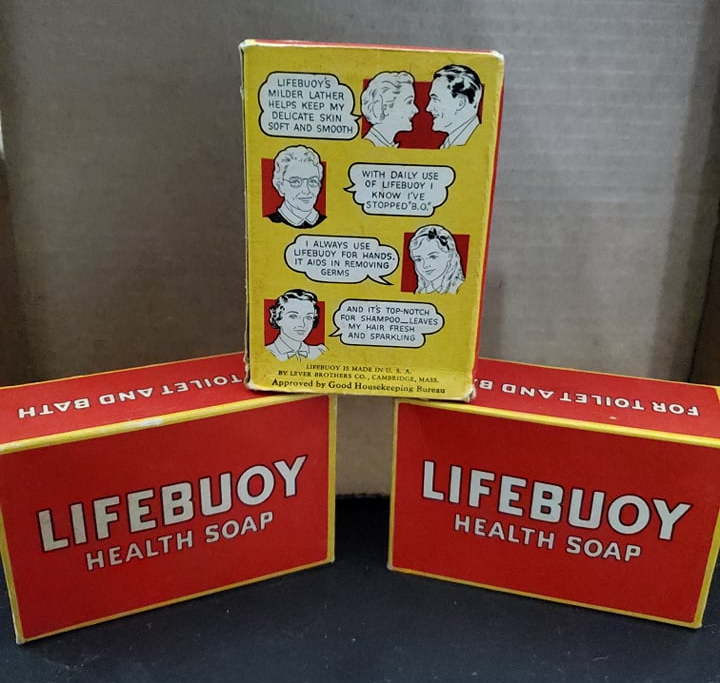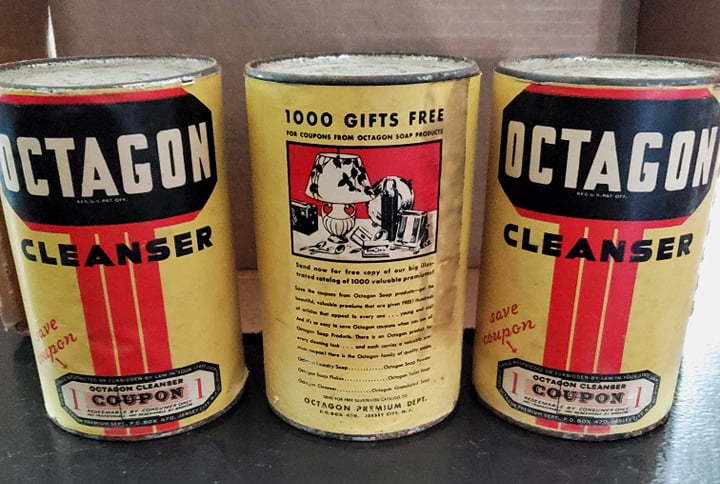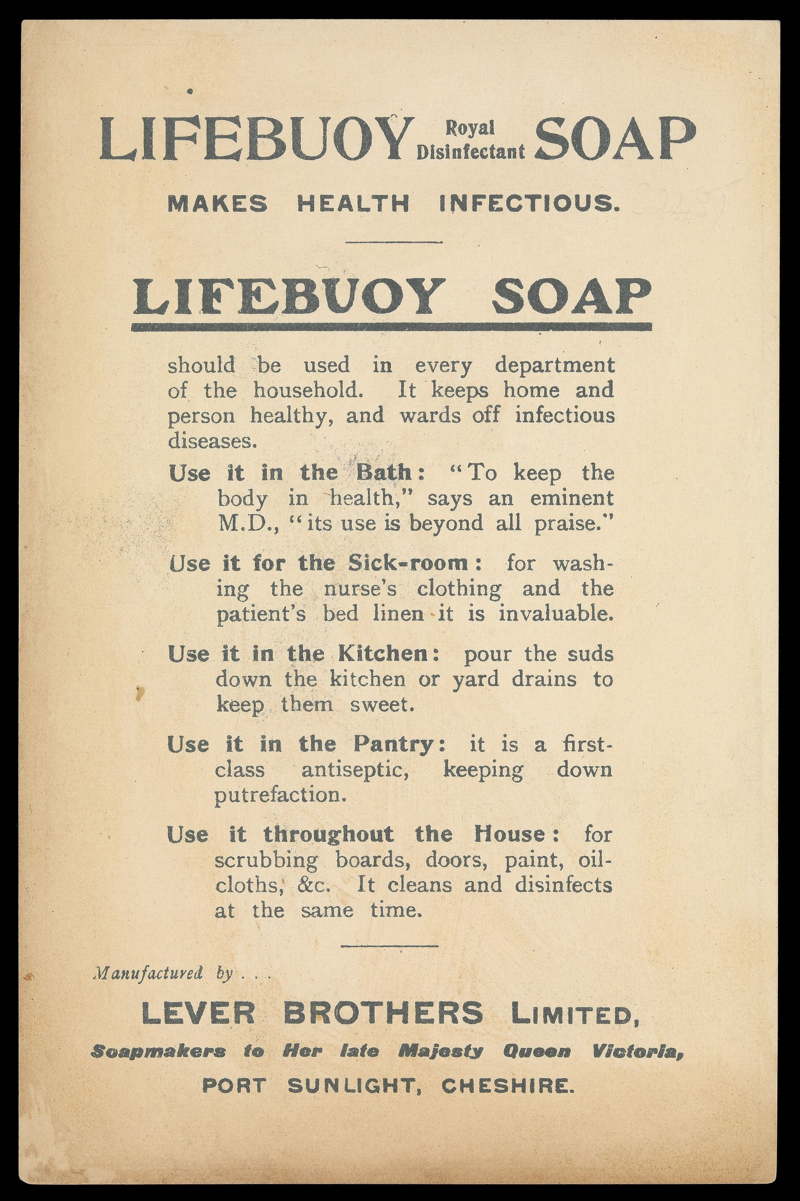Items in the Luther Store Museum
Here are some of the items located in our museum. We will be adding to the page every week, so check back to see more items.
Tool Sharpening Grinding Stone Wheel
On display at the Luther Store Museum is a C. 1895 Stone Grinding Wheel.
This piece of equipment was an indispensable necessity on any working farm.
A grind stone is a round stone, typically made of sandstone or granite. It was used for grinding, sharpening and shaping ferrous tools (tools that contain iron) such as axe blades, knives, hoes, sickles, hand saws and other farm implements.
When using the grinding stone, small amounts of water would need to be dropped onto the stone and the piece of equipment being sharpened to keep the metal from over-heating. That is what the drip cup on the frame is for.
The meaning of the expression "keep your nose to the grind stone” is to work hard, do it right and get it done.
The expression came from how the person using the grindstone would place their body against the equipment being sharpened. They would hold the equipment in place with their body and their face would be extremely close to the grind stone.
Information from:
madehow.com
Ranney Ice Box c. 1912
On display at the Luther Store Museum is an oak cabinet, Ranney Company, c. 1912 ice box.
The ice box was invented in 1802 by Thomas Moore, an American cabinet maker, farmer, inventor, surveyor, engineer and entrepreneur. Thomas Moore used the ice box to transport butter to market from his farm in Brookville, Maryland. His invention allowed him to sell the butter in the form of solid bricks, while his competitors sold melted butter in pottery.
The Ranney porcelain ice box would keep one large block of ice solid for one day before melting.
The electric refrigerator was invented in 1917, but was not introduced to the American public until 1927. The ice box became obsolete in 1950.
Information from:
Thomas Moore Genealogy site
Classroom.synonym.com
Maryland Patent website
Pump Organ
The Luther Store Museum has 2 Pump Organs on display. Both in good condition and are played every year for the children at our school tours.
A Pump Organ is a keyboard instrument that generates its sound by vibration of metal reeds under wind pressure. A Reed Organ commonly refers to instruments having free reeds vibrating through a slot and not pipes. The other types of organs are the harmonium and the melodeon.
A small type of pipe organ describable as a reed organ is the Regal, which has beating reeds (vibrating against a frame) and pipe resonators.
Information from: Britannica.com
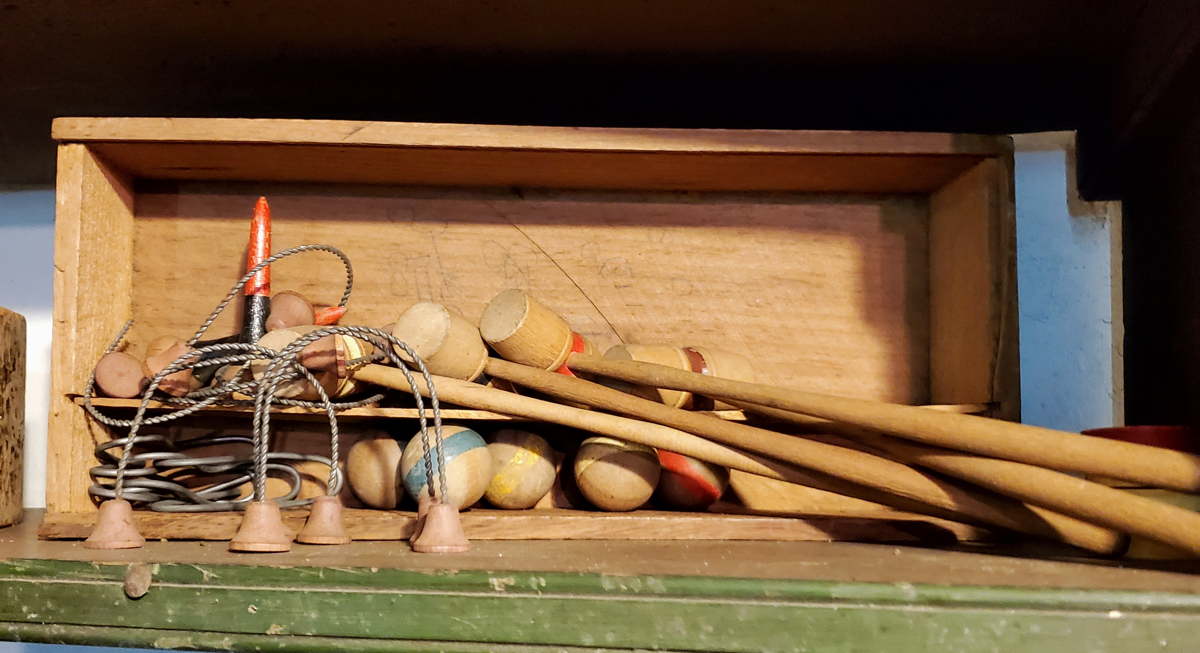
Table Croquet
The lawn game croquet was brought from Ireland to England by Lord Lonsdale in 1851. The game became a highly popular social past time in England in the 1860’s.
As croquet and other games became more popular in the higher social scene, the games were redesigned for indoor play. During inclement weather, the game was played on the parlor floor or on long tables.
Information from: Victorian Croquet
Butter Churns
The earliest evidence of butter dates back to 2000 years B.C. It is not known who invented butter, but there is a theory that it was created by accident.
The butter churns that are on display at the Luther Store Museum are called Plunge Churns or Dash Churns. The stick is called a dasher or churn dash that is moved up and down in an upright container. The containers were usually made of wood or pottery. The stick might be perforated or a wooden circle or crossed boards could be attached to the bottom of the stick. This would help to beat the cream. Using a plunge churn or dash churn did take a considerably long time.
In the 18th century more complex kinds of churns that shortened the butter making time were developed. They became more popular in the 19th century.
Information from: Old and Interesting
Crisco 50 lb. container c. 1915
Crisco was put on the market in 1911 by Procter and Gamble.
In 1912, the first advertising came out in a popular woman’s magazine and emphasized the benefits of using an all-vegetable based shortening as compared to those shortenings made out of butter or animal fat.
In 1915, Procter and Gamble started selling 50 lb. drums to grocery stores so that the stores could sell the Crisco in smaller amounts to their clients.
In 1923, Procter and Gamble began advertising on the radio and started to promote to other ethnic groups. They also started selling cook books with Crisco as the star ingredient. Over the years, other variety of oils such as vegetable oil, corn oil, canola oil and coconut oil were developed They also added butter flavor to their vegetable shortening.
Information from: Grocery.com
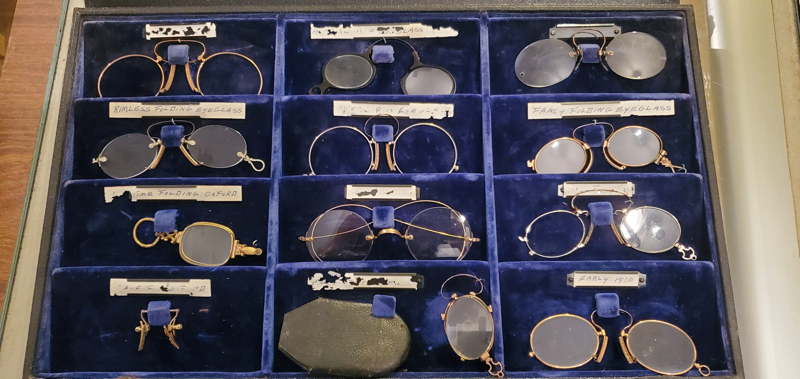
19th Century Eye Wear
In the 19th century, eye glasses were still handcrafted and not available to everyone. But, with the Industrial Revolution right around the corner, production of magnification glasses was underway.
The average farmer and working person could generally not afford prescription glasses. This prompted the invention of magnification glasses which could be purchased in your local general store. Here in Swansea, that was the Luther General Store.
There was a tray of different styles and magnification choices for someone to try on and purchase. These were similar to the reading glasses now available in Walgreens, CVS, etc.
The 19th century customer had a wide variety of corrective eyewear to choose from for problems with distance and reading. These were available without having to go to the opthalmologist. The average exam in the late 1800's would cost upwards of $100. In today's market, that would be over $2,000, out of pocket.
The Luther General Store had a moderate amount of styles and magnifications to choose from.
